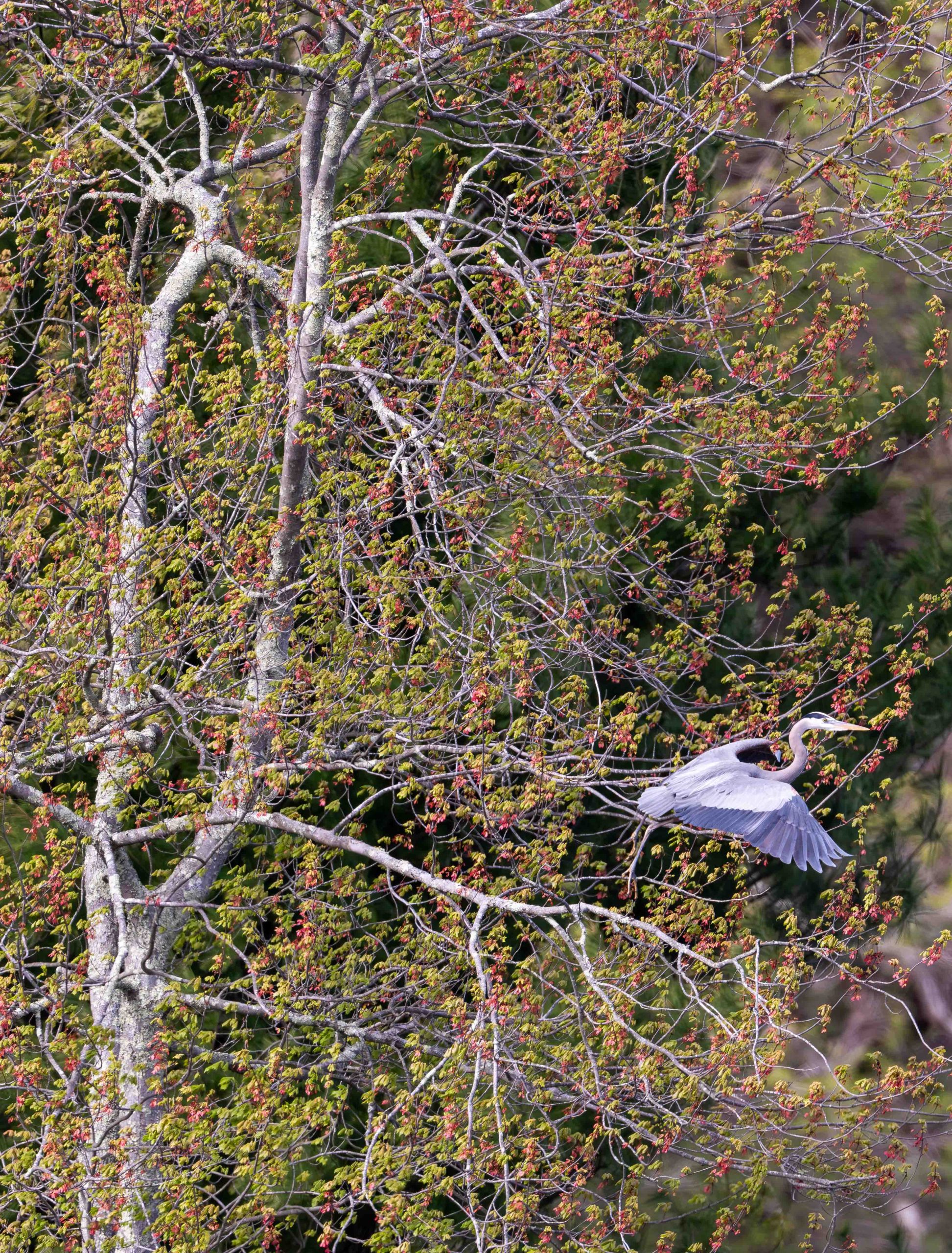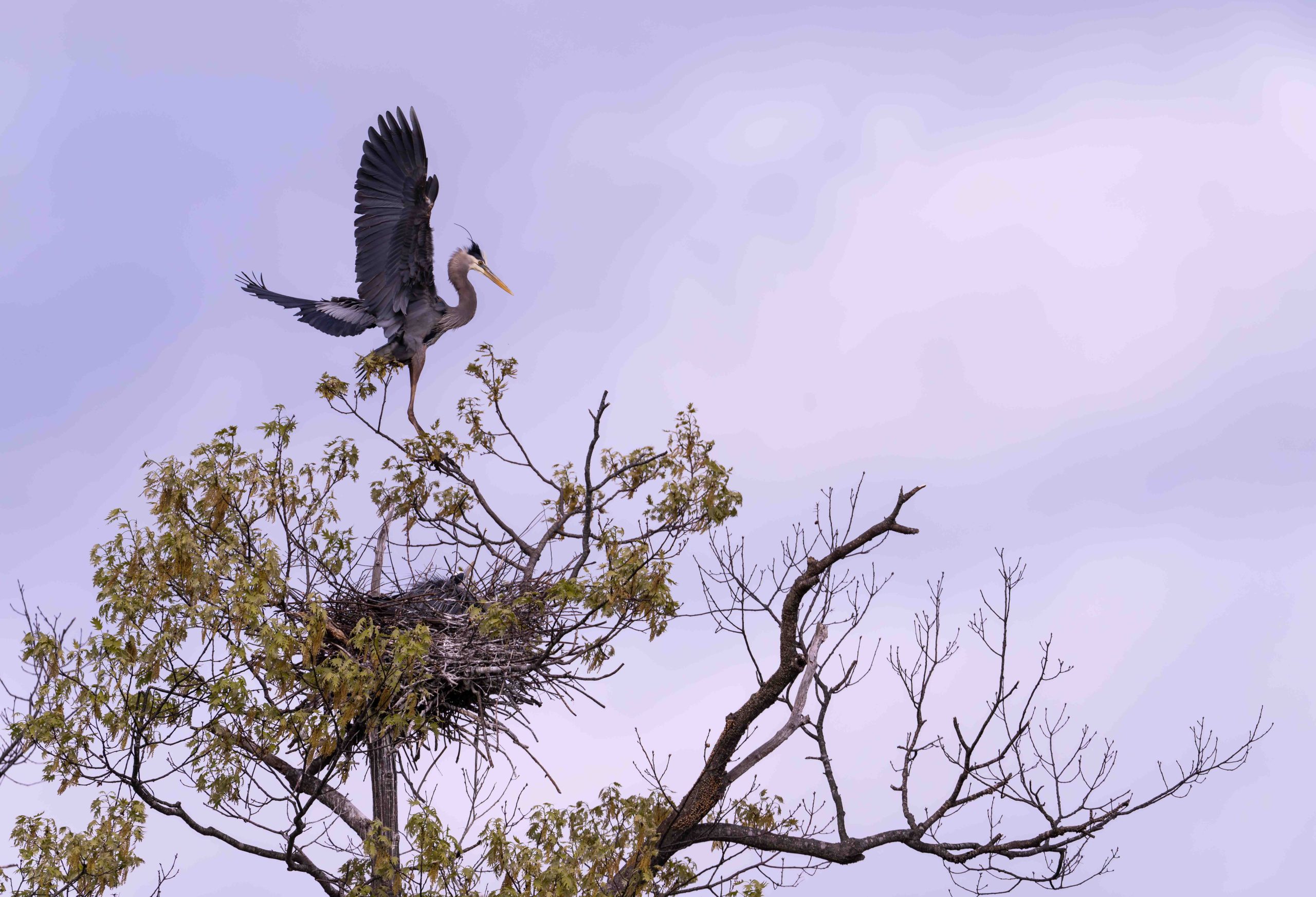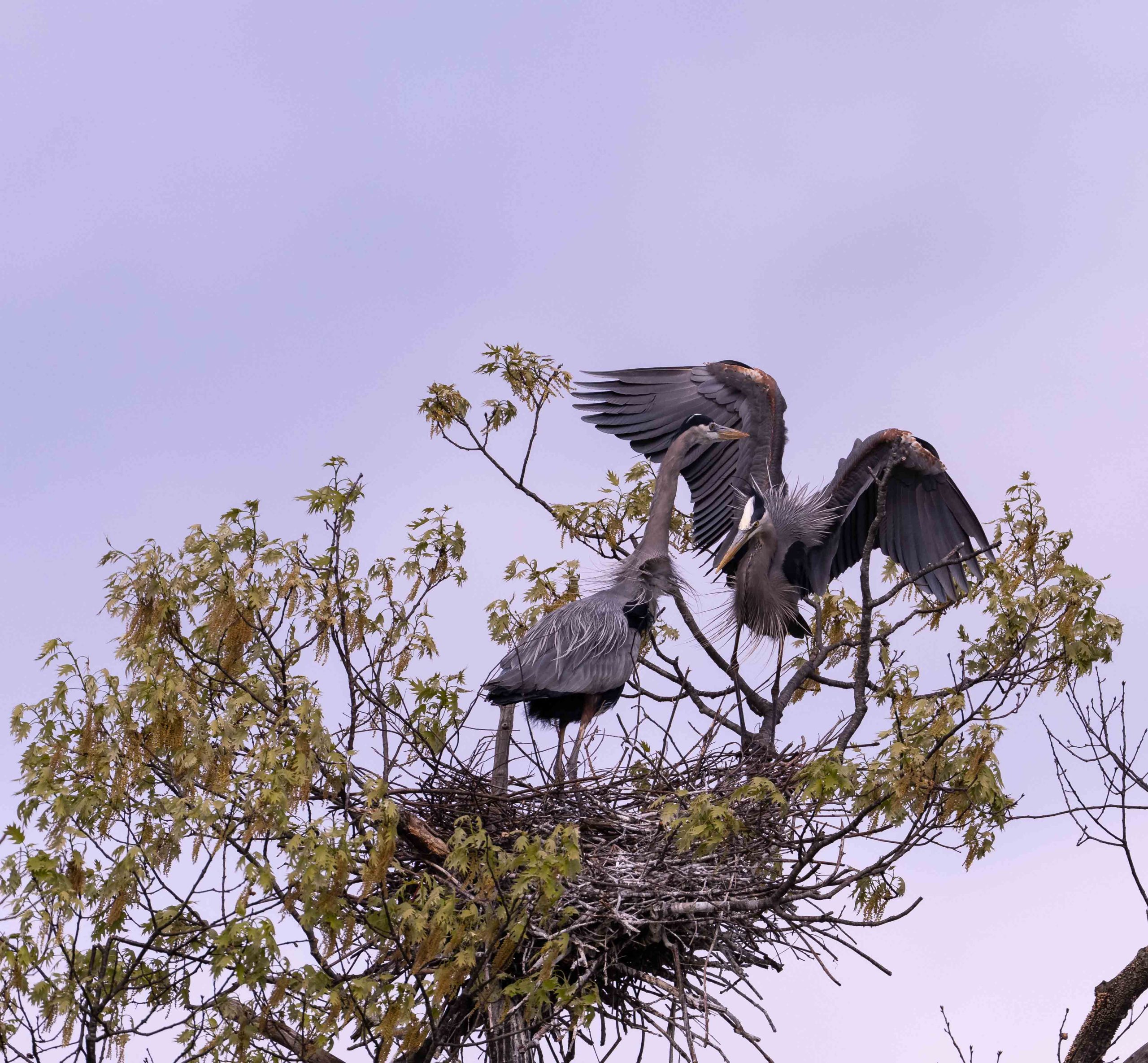Great Blue Herons
A preservation success story
Statuesque at upwards of four feet tall with a wingspan of more than six feet, the Great Blue Heron (Ardea herodias) is an awesome presence in wetlands, lakes and at the edges of rivers. Once a rare sight just a few decades ago due to hunting pressure, pesticides, and pollution, they have made a recent and astonishing comeback. This repopulation illustrates the mutual dependencies of all organisms on planet Earth and the power of well-managed recovery. Now legally protected, beavers dam streams creating ponds and swamps where trees have died producing ideal habitats for herons. Additional more stringent protections of the herons and wetlands has resulted in a thriving population. Great Blue Herons are widespread in many parts of North America from southeastern Alaska through Central Canada, and south through Florida and Mexico. Their breeding range extends as far south as the Galapagos islands. Migrating northwards in early spring to nest and nurture their young they can be observed in many North American wildlife sanctuaries. In this ever-threatened biosphere due to climate change, the Great Blue Heron story is one glimmer of hope for all of us.
Following the Great Blue Herons 2023
By chance on March 13, 2023, I witnessed the return of the first two Great Blue Herons to their nesting site on an island west of Boston, MA. From the shore I saw them begin refurbishing a nest high up in the trees. They were soon joined by other herons who chose mates and commenced renovation on their own nests. I returned every week for months to see what they were up to. I documented courtship and mating and finally on May 5th I saw the first offspring. Both parents took turns bringing food and watching over their young. I observed with the help of a long camera lens, and they took no notice of me. Whenever a parent gracefully swooped in with provisions there was an incredible din of the nestlings squawking and jumping around. A parent would leave, the chicks settled down for a few hours until another visit elicited the same frenetic activity. Next came wing flapping and balance testing. Weeks later each ventured from the nest to surrounding branches, then test flights returning to the nest for food while they learned how to successfully forage on their own. From hatching to fledging, 60 days passed so quickly as they grew to almost the same size as their parents. In mid-July they announced their adulthood and went off on their own. I’ll welcome them back in spring 2024 to see the cycle unfold again.


















































